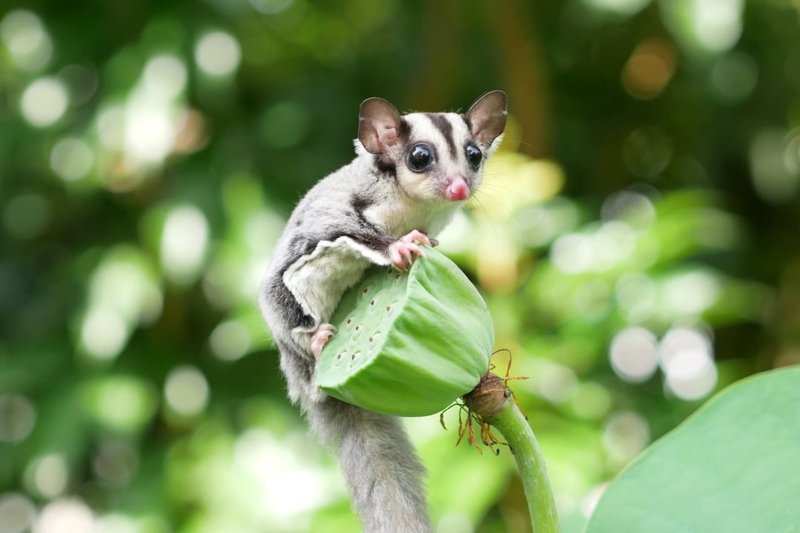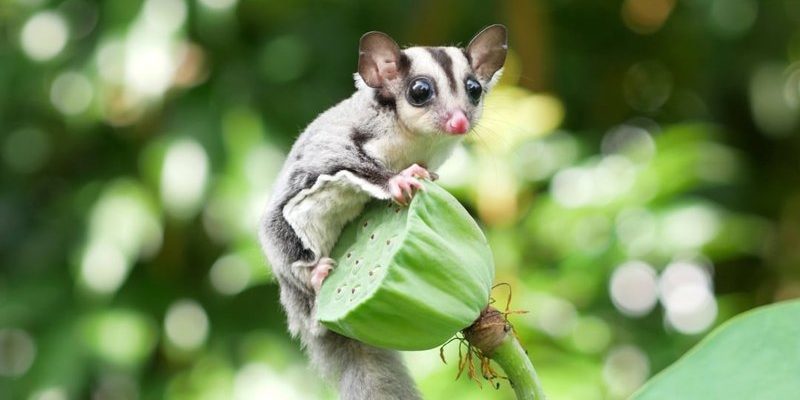
Imagine living in a cozy apartment with no one to share a laugh with or have a late-night snack. Kind of lonely, right? That’s a bit like how sugar gliders feel without a companion. They are naturally social animals, and while they can adapt to living alone under certain circumstances, they truly flourish when they have a buddy by their side. Let’s explore why having a companion is crucial for their well-being and what that means for you as a potential owner.
Understanding the Social Nature of Sugar Gliders
Sugar gliders are *social creatures* by design. In the wild, they live in family groups, often bonding closely with one another. This social structure provides them with not only companionship but also protection. Just think about it—when you’re part of a community, there’s a sense of safety that comes with it. Sugar gliders experience a similar comfort level when they have a buddy.
These marsupials communicate through a series of vocalizations, body movements, and even scent marking. This complex social behavior helps them stay connected and ensures they can find food and shelter together. Imagine having a friend who always knows where to find the best snacks—it makes life a lot easier! You might find it interesting that, when sugar gliders are alone, they can become stressed or even develop behavioral issues, much like humans might when isolated for too long.
Benefits of Companionship for Sugar Gliders
So, why is it important to think about getting a second sugar glider? For starters, having a companion can lead to a happier, healthier pet. Here are some key benefits:
- Reduced Stress: Sugar gliders need social interaction to avoid anxiety. A companion can help ease stress levels and promote a more balanced lifestyle.
- Social Learning: Younger sugar gliders often learn vital skills by observing older ones. This kind of learning is crucial for their development and survival.
- Enhanced Activity: With a buddy around, sugar gliders are more likely to engage in playful activities, leading to better physical health.
Think of it as a workout buddy for your sugar glider—when they have someone to play with, they’ll be more active and less likely to become overweight. Plus, the social interaction helps them maintain a positive mood, which is just as important as physical health.
What Happens If They Live Alone?
While it’s clear that sugar gliders thrive with company, you might be wondering what happens if they’re by themselves. Honestly, some sugar gliders can adapt to living alone if they receive enough attention from you, the owner. However, this isn’t the ideal situation for them.
Living solo can lead to several issues:
- Increased Loneliness: Just like people, sugar gliders can feel lonely if they don’t have another to bond with.
- Behavioral Problems: They might develop habits like excessive chewing or biting, which are signs of stress or boredom.
- Decline in Health: Without a companion to engage with, their activity levels may drop, leading to weight gain or other health issues.
If you’re considering adopting a sugar glider, think about how much time you can dedicate to them. If you’re often away or busy, getting two may be the best choice for their happiness.
Choosing the Right Companion for Your Sugar Glider
If you decide to get a buddy for your sugar glider, you’ll want to ensure they’re compatible. Compatibility can depend on age, temperament, and previous social experiences. Here are some tips for selecting the perfect companion:
1. Age Match: Ideally, choose gliders that are close in age. Younger sugar gliders might be more playful and energetic, while older ones tend to be calmer and more settled.
2. Temperament: Observe their personalities. If one is super shy and the other is very bold, they may not mesh well. A balanced temperament can lead to a happier pairing.
3. Health Considerations: Always check that both sugar gliders are healthy and free from diseases. This ensures a long, happy life for both.
Getting a companion isn’t just about dropping another sugar glider in their cage; it’s about creating a *family*. The bonds they form can be incredibly strong, leading to a richer life for both pets.
How to Introduce New Sugar Gliders
Now that you’ve got a companion in mind, how do you introduce them to your current sugar glider? Here’s a simple plan to make the transition smoother:
1. Separate Quarantine: Before introducing new sugar gliders, keep them in separate cages for about 30 days. This step helps ensure they’re healthy and prevents any potential spread of disease.
2. Scent Familiarization: Exchange bedding materials between the two cages. This helps them get used to each other’s scent, making the eventual meeting less stressful.
3. Supervised Meetings: After the quarantine period, allow them to meet in a neutral space. Watch how they interact, and be prepared to separate them if things get tense.
4. Gradual Integration: If they seem to get along well, slowly allow them to share the same space. Monitor them over the next few weeks, ensuring they continue to bond instead of becoming territorial.
Introducing new sugar gliders requires patience and care, but it can lead to a loving companion for your pet.
In the end, sugar gliders are inherently social animals that thrive on companionship. Whether you choose to adopt one or two, understanding their needs and behaviors can make all the difference in their happiness and health. Just like a close-knit group of friends, sugar gliders need each other to share experiences, stay active, and prevent loneliness.
If you’re considering adding a sugar glider to your home, ask yourself: how much time can you devote to them? If it’s limited, two might be a perfect fit. Remember, they’ll bring joy, laughter, and a little bit of mischief into your life. With the right care and companionship, you’ll create a warm, loving environment that both you and your sugar gliders can enjoy together.

